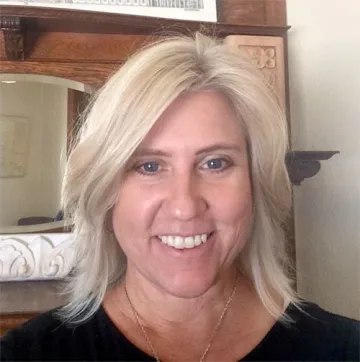Native American Advancement, Initiatives and Research Web Portal Launched with Support of CAPLA Assessment Coordinator

School of Landscape Architecture and Planning Assessment Coordinator Kelly Eitzen Smith has long been passionate about the University of Arizona’s role in supporting Indigenous and Native communities. Thanks to her support, UArizona’s Office of Native American Advancement and Tribal Engagement, Office of Native American Initiatives and Native Peoples Technical Assistance Office recently launched the collaborative Native American Advancement, Initiatives and Research (NAAIR) web portal.

The portal elevates UArizona’s long-standing commitment to Native and Indigenous knowledge and engagement, both on and off-campus, and its dedication to respectful and impactful university-tribal partnerships. NAAIR offers an accessible go-to hub for information about the university’s rich array of Native and Indigenous research, education programs, outreach, community resources and engagement opportunities.
“NAAIR’s website is a one-stop portal to everything Native on campus, along with an across-campus calendar of current events and recent news items,” says Smith, who has also served as a Native Peoples Technical Assistance Office project coordinator since 2016. “The site is meant to be empowering, celebratory and informative about what's happening in our campus community.”
NAAIR offers support to Native students and faculty pathways, guidance for research that follows the principles of respectful engagement and collaboration with sovereign Native nations and a searchable database of sponsored research and engagement with Native nations. It includes a list of UArizona and community academic and educational programs and highlights our Native American faculty and students.

Kelly Eitzen Smith, Assessment Coordinator, School of Landscape Architecture and Planning.
The effort was initiated by Robert Williams, Regents Professor and co-director of the Rogers College of Law’s Indigenous Peoples Law and Policy Program, with the support of the Arizona Institutes for Resilience and the Agnese Nelms Haury Program in Environment and Social Justice. Native Peoples Technical Assistance Office Director Claudia Nelson led the crafting of the web portal, with the assistance of Smith and Indigenous Peoples Law and Policy Doctor of Juridical Science candidate Vishal Siddharth Gaikwad.
“The website is meant to be for everyone—students, faculty, researchers and community,” concludes Smith. “We see it as a portal to other websites. So if you are a Native student and are looking for clubs on campus or scholarship information, our site will lead you to that information. If you are faculty and interested in learning about other Native faculty on campus, we have a searchable database with faculty profiles. If you are a tribal member and want to see what research projects are happening in your community, you can use our research database for that information.”
View the new Native American Advancement, Initiatives and Research web portal at naair.arizona.edu.
Story courtesy Agnese Nelms Haury Program.



